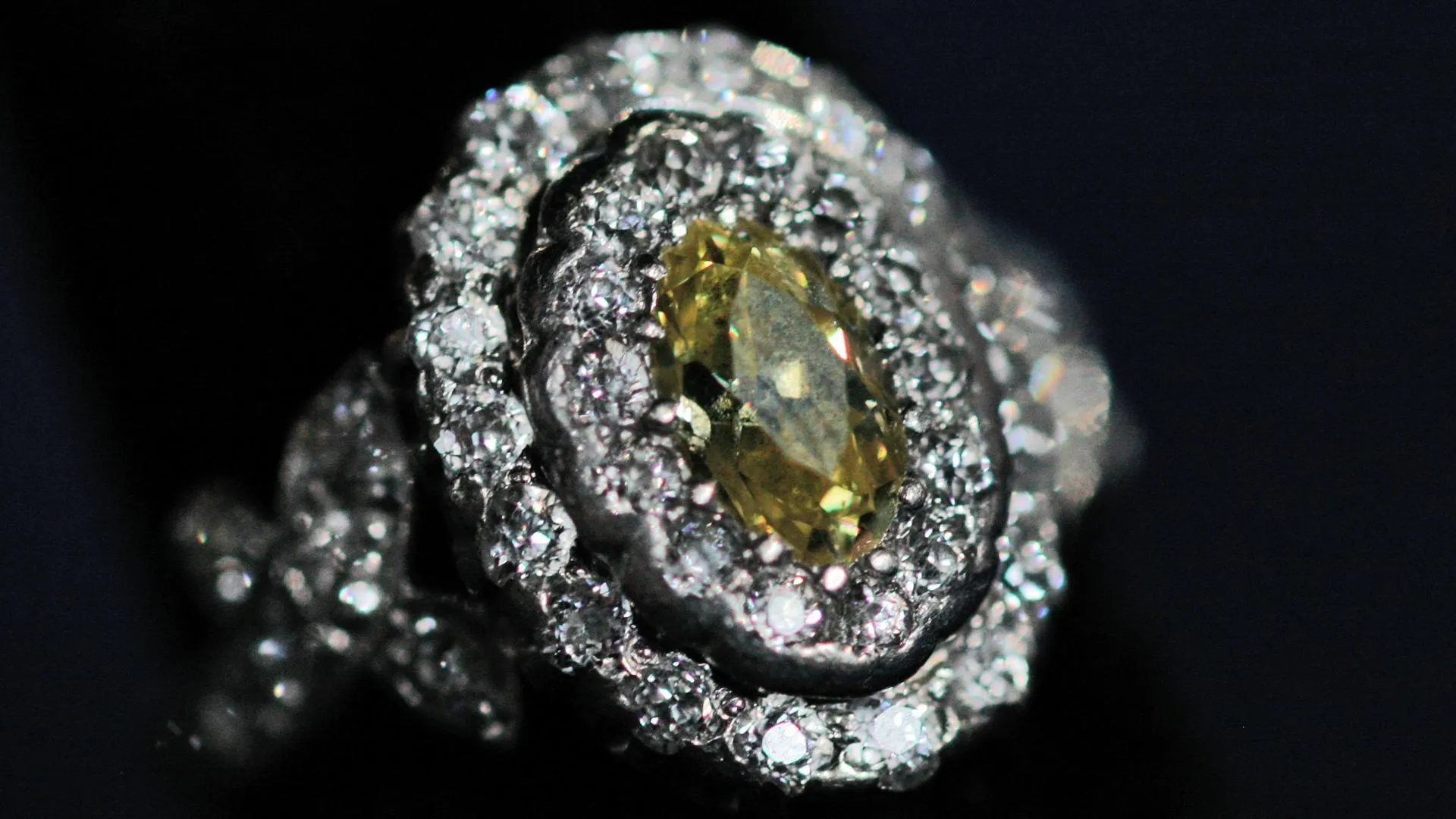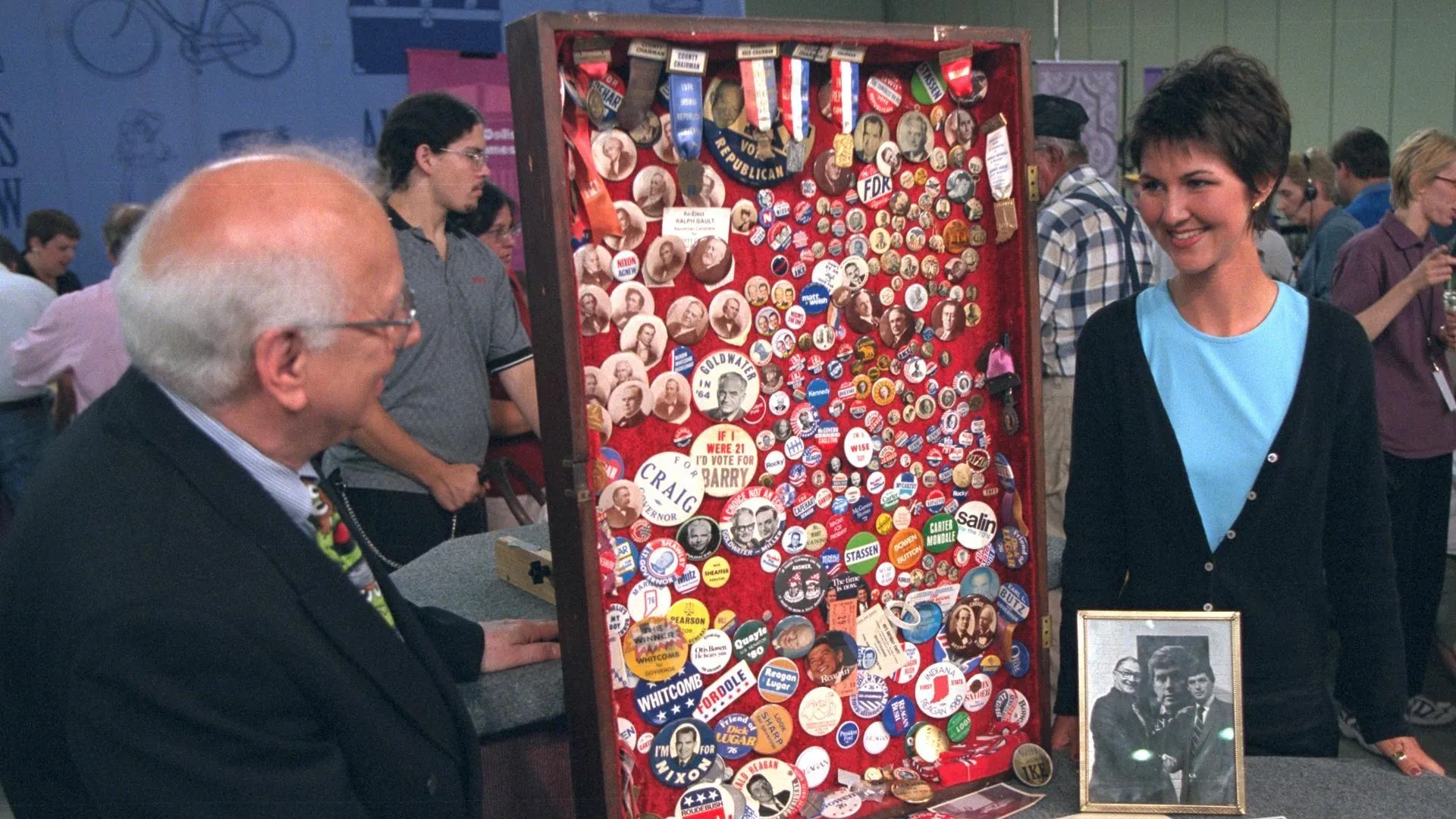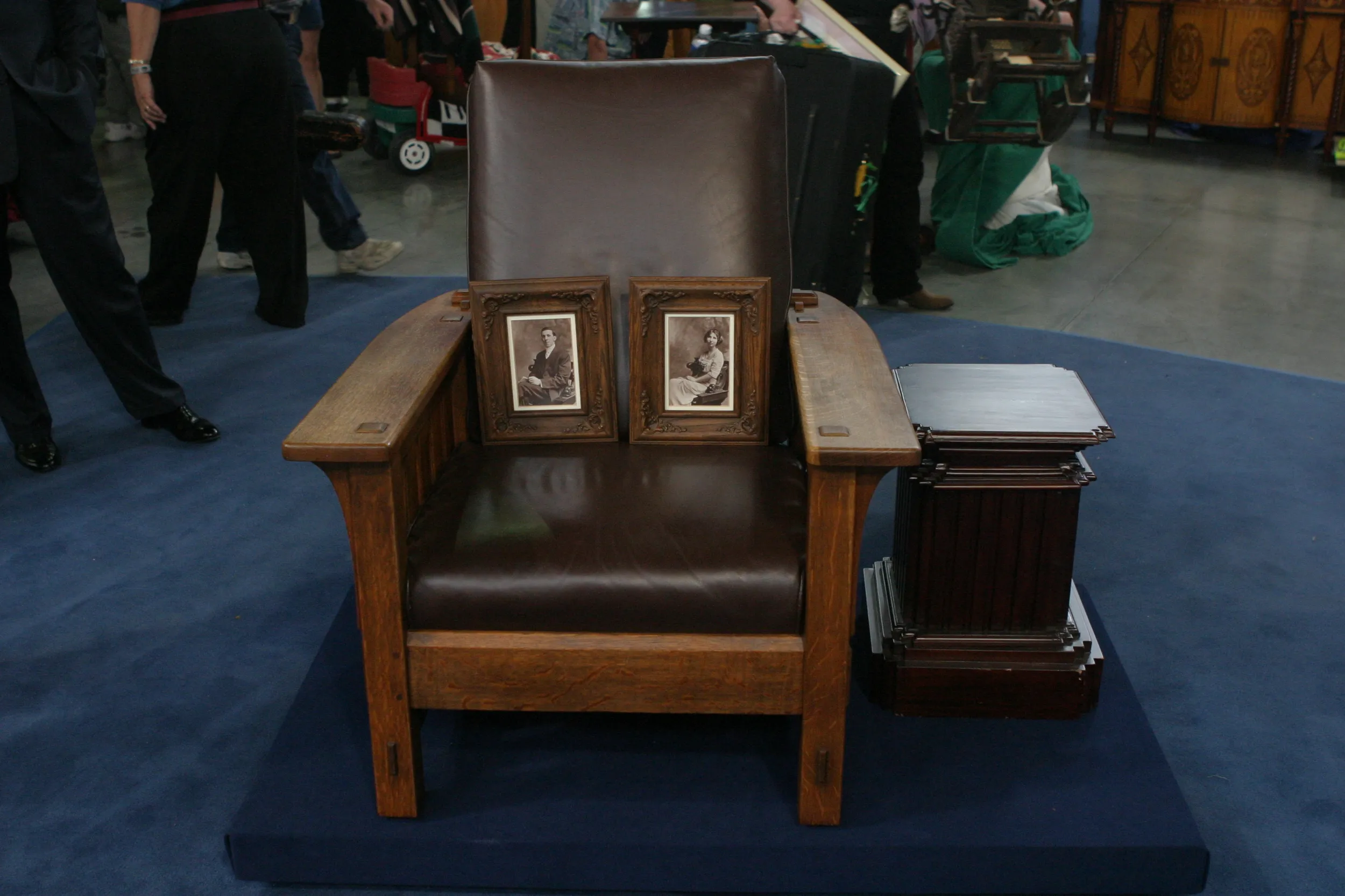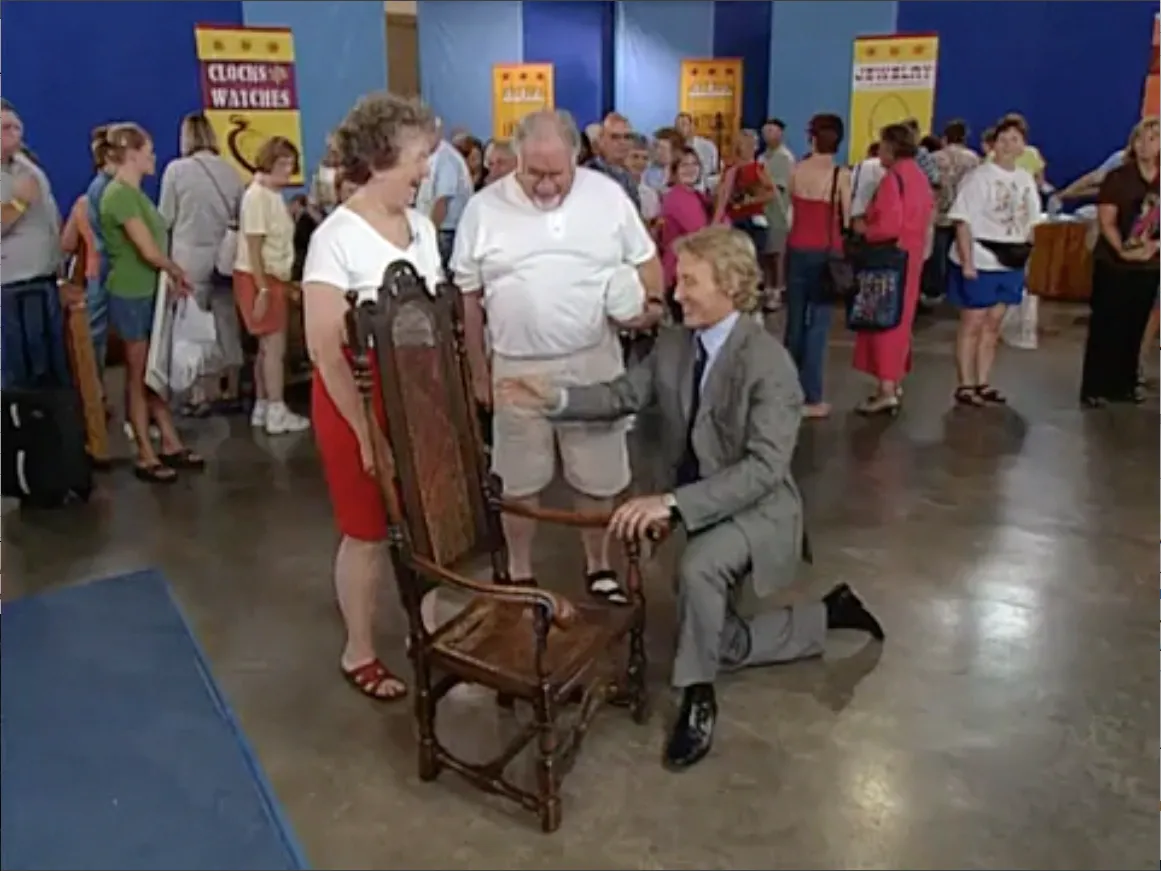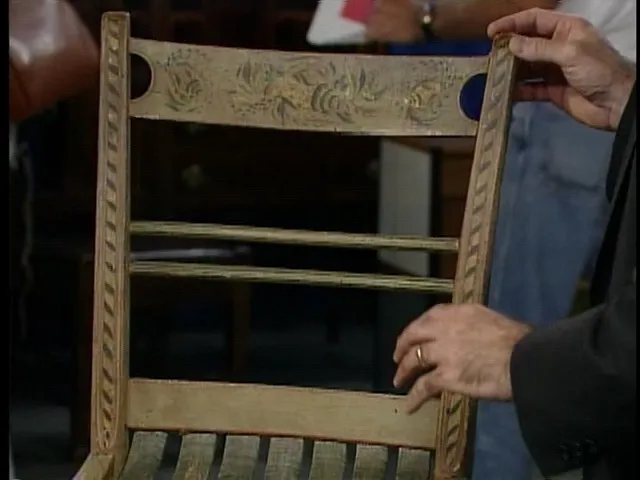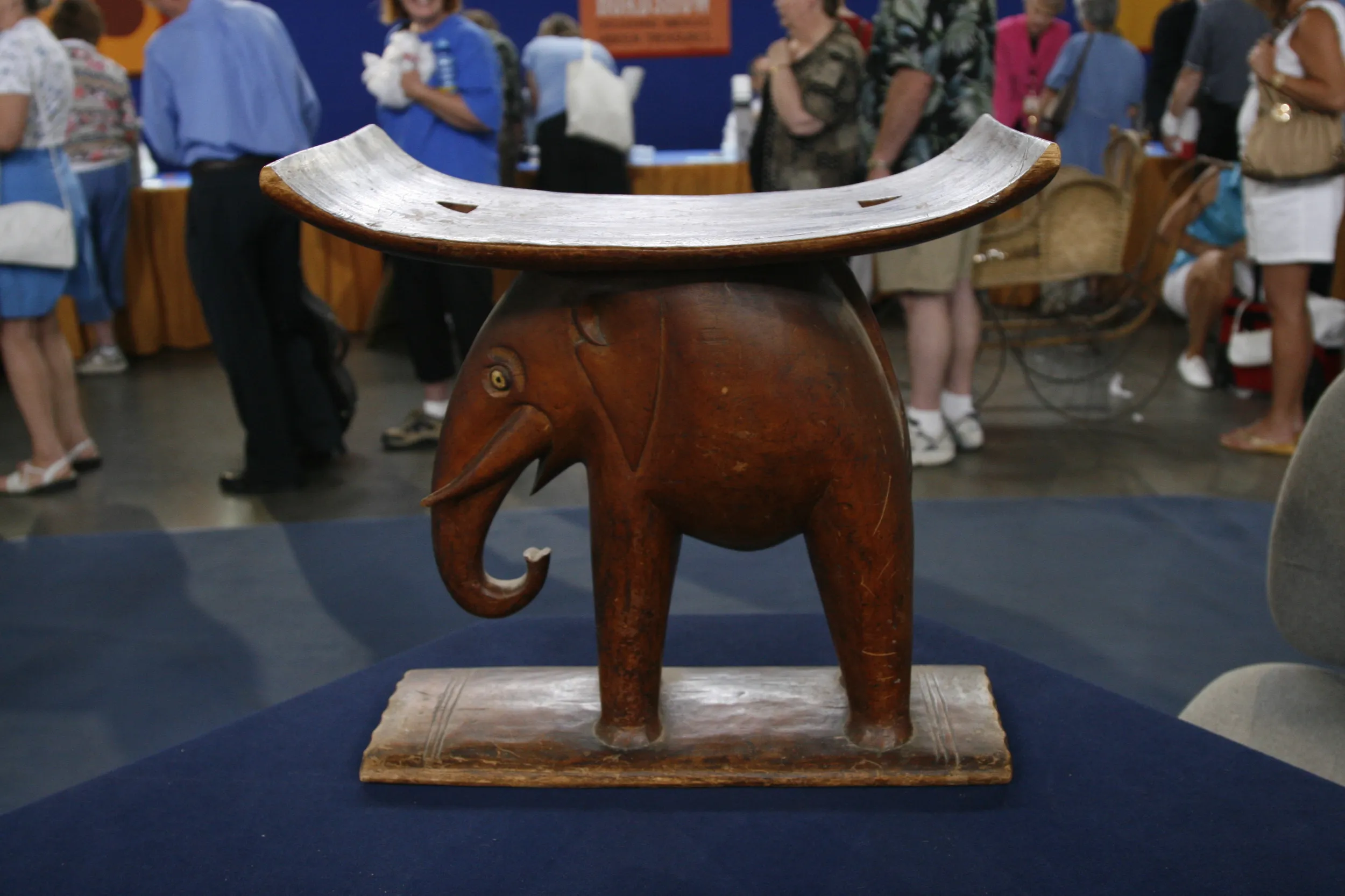GUEST: My father inherited them from his aunt, who acquired them through her marriage, and then they came to my dad and passed down to me. We always just referred to it as the "Senate Desk." But there was also the rumor that we'd heard that it came from a Congressman White from Maine. So that didn't connect. And then I went on to the ROADSHOW, uh, website, and saw that one had been appraised about 2000 or 2001 in Tulsa. And it had been refinished. And there I found out that it was made in about 1857, in Boston, designed by, I believe, a Philadelphia architect or designer. And it was in the House of Representatives, not the Senate, from about 1857 until sometime after the Civil War.
APPRAISER: Both pieces were designed by Thomas Walter.
GUEST: Okay.
APPRAISER: Who was the architect of the Capitol.
GUEST: Oh, he was.
APPRAISER: They were made by two different people.
GUEST: Really!
APPRAISER: The desk was made by Doe and Hazelton of Boston, the chair by Bembe and Kimbel of New York.
GUEST: Okay.
APPRAISER: They were made and used from 1857 to 1873...
GUEST: Okay.
APPRAISER: ...at the House of Representatives.
GUEST: Okay, that long.
APPRAISER: Not much is known about Doe and Hazelton in Boston; a little bit more is known about Bembe and Kimbel. Kimbel was a European- trained cabinetmaker from a long line of furniture makers in Europe.
GUEST: Mm-hmm.
APPRAISER: He came to America, like many immigrants, and developed a very prosperous company. He was a very noteworthy 19th-century cabinetmaker. I think what's really spectacular about the pieces, though, is their historical significance and what they represent to America.
GUEST: Mm-hmm.
APPRAISER: Not only in their design, but what they were witness to. Some of the design elements that I think are particularly interesting is the United States shield, the oak leaves that flank it, the laurel leaves that come down the stile here. And then as we come down the chair, you'll notice the star on the skirt, which is also incorporated on the desk. Both motifs are incorporated on the desk, as well.
GUEST: Yes, as is the shield.
APPRAISER: You'll see three chairs to probably one desk. So the desk, much scarcer than the chair, interestingly enough.
GUEST: Is that right? I thought it would be the reverse.
APPRAISER: Any idea of its value? You ever had it appraised?
GUEST: Well, the desk that was appraised previously on the ROADSHOW, that had been refinished...
APPRAISER: Yeah.
GUEST: And it didn't have the original...
APPRAISER: Uh-huh.
GUEST: ...I think appraised at $8,000 or $9,000. And the man who appraised it said that he'd heard of one selling for about $15,000 several years earlier. So, I just, you know, conservative thought, well, maybe with the chair, maybe $20,000.
APPRAISER: Being together, a chair and a desk, increases its value. I think that a gallery would offer it at a fixed retail price of $40,000.
GUEST: Really?! Well, that's very nice.
APPRAISER: So it also gives you an idea of how things have appreciated since that last appraisal.
GUEST: Yes, exactly.
APPRAISER: Because when Wendell Garrett did that, when it was done, it was a very accurate appraisal. But these have since...
GUEST: Exactly.
APPRAISER: Over the last two or three years have probably doubled in what used to be their value.
GUEST: Is this the original?
APPRAISER: I believe so. The upholstery is not.
GUEST: My mother had the upholstery redone.
APPRAISER: It originally had leather upholstery.
GUEST: We didn't know, but we thought so.
APPRAISER: One sold, with its original leather, sold for $30,000, but it's...
GUEST: Really?
APPRAISER: Upholstery makes a big difference.

